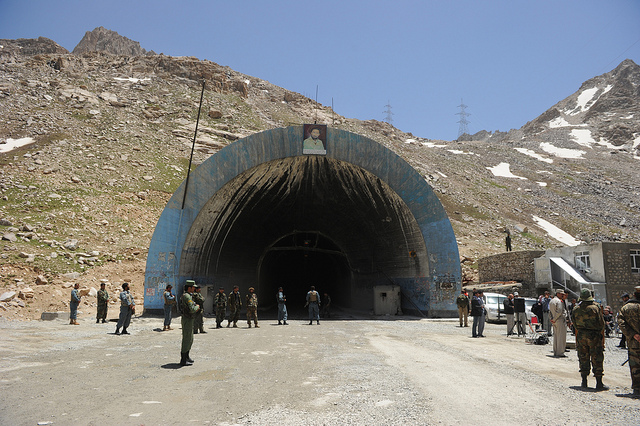
Do Small Modular Reactors Present a Serious Option for the Military’s Energy Needs?
 The Defense Energy Security Caucus (DESC) held a briefing yesterday afternoon with proposals to surge the usage of small modular reactors (SMRs). The speakers at the briefing, included Rep. Bartlett (R-MD) and representatives from the American Nuclear Society, recommended that Congress and the White House need to do more “encourage the development and deployment of multiple SMR designs.”
The Defense Energy Security Caucus (DESC) held a briefing yesterday afternoon with proposals to surge the usage of small modular reactors (SMRs). The speakers at the briefing, included Rep. Bartlett (R-MD) and representatives from the American Nuclear Society, recommended that Congress and the White House need to do more “encourage the development and deployment of multiple SMR designs.”
SMRs are small, nuclear-powered reactors with power levels less than or equal to 300 MW and the capacity to produce as little as 25MW at a time.
SMRs differ from conventional nuclear reactors, which are capable of producing upward of 1,000MW, is that they are much smaller and cheaper. That makes them more capable of catering to our modern energy needs.
SMRs are able to be constructed in factories, with manufacturing capabilities already available in the United States. Their smaller size means that they require less construction time and can be deployed in areas that cannot accommodate conventional reactors. Although still in the design stage, SMRs could support small townships and military bases once manufactured. The flexibility of the new technology is particularly important to the DESC audience because SMRs can support remote military bases.
The speakers at the DESC briefing suggested a surge is needed in SMR production to combat a major vulnerability in America’s national security: possible attacks to the power grid. Such attacks could cause blackouts for over a year according to Congressman Bartlett, leading to blackouts never before experienced in the United States. In such an event the U.S. military would still need to function 24/7. Current predictions made by the DESC suggest that up to 90% of the US military’s energy needs could be supplied by SMRs.
Congressman Bartlett also pointed out that current military bases such as Guam – which is fueled by the transport of diesel – are extremely vulnerable should the energy transport system be disrupted. Fuel supplies are even more unstable in Afghanistan, where one out of every twenty-four convoys results in a casualty. According to Congressman Bartlett, SMRs could make such bases energy self-sufficient.
Unfortunately all the hype surrounding SMRs seems to have made the proponents of SMR technology oblivious to some of its huge flaws.
Firstly like large reactors, one of the biggest qualms that the public has to nuclear is problems associated with nuclear waste. A more decentralized production of nuclear waste inevitably resulting from an increase in SMRs production was not even discussed. The danger of transporting gas into some military bases in the Middle East is already extremely volatile; dangers of an attack on the transit of nuclear waste would be devastating.
Secondly, SMRs pose many of the same problems that regular nuclear facilities face, sometimes to a larger degree. Because SMRs are smaller than conventional reactors and can be installed underground, they can be more difficult to access should an emergency occur. There are also reports that because the upfront costs of nuclear reactors go up as surface area per kilowatt of capacity decreases, SMRs will in fact be more expensive than conventional reactors.
Thirdly, some supporters of SMR technology seem to have a skewed opinion of public perception toward nuclear energy. Commissioner of the U.S. Nuclear Regulatory Commission, William C. Ostendorff, didn’t seem to think that the recent Fukushima disaster would have any impact on the development on SMRs. Opinion polls suggest Americans are more likely to think that the costs of nuclear outweigh its benefits since the Fukushima disaster. For SMRs to be the philosopher’s stone of the military’s energy needs the public needs to be on board.
The DESC’s briefing did illustrate the hype that the nuclear community has surrounding SMRs, highlighting some pressing issues surrounding the military’s energy vulnerability. But proponents of SMRs need to be more realistic about the flaws associated with SMRs and realize that the negative impacts of nuclear technology are more costly than its benefits.






[…] generators to supply electricity. All three categories of bases are therefore at risk to various forms of interdiction–ranging from near-future cyber attacks to well-aimed mortar attacks. […]